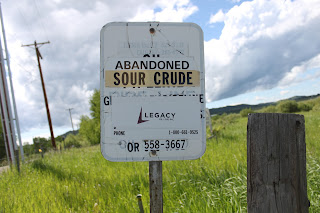Argentina: GMO Soy Brings Wealth and Crippled Children
B. McPherson
Dried soybeans
On the surface the financial turnaround in Argentina is
nothing short of miraculous but dig a little deeper and the true costs become
apparent. A decade ago Argentina was bankrupt and defaulted on its international
debts. Today it is solvent. Gone are the gauchos and cattle on the pampas. Here
is huge industrial production of soy beans. 95% of the crop is exported for
animal feed and for humans, a cheap source of protein.
98% or more of the vast soy plantations are made up of
Monsanto’s genetically modified plants. The juggernaut of soy conversion has
grown since the first introduction of the GM seeds in 1996. The current
Argentine government, led by President Cristina Kirchner, is in full support of
the cultivation of the cash crop. Currently over half the arable land in the
north of the country is devoted to growing soy. Argentina is now the number one
exporter of soybeans in the world. For each tonne of soybeans sold, the
government gets a cut.
While many have concerns about the spread of GMOs, local
people in the area around Cordoba express misgivings about the use of aerial
spraying of pesticides over the vast fields. The modified plants are resistant
to damage done by glyphosate, a weedkiller first introduced by Monsanto as
Roundup. Glyphosate, in addition to being a known cancer causing agent and a
suspected teratogen, kills normal broad leafed plants – the kind people grow
for food in their gardens. People in small villages report that when the big
corporations are spraying, the water that they drink is contaminated with the
poison and spray falls on them like soft rain.
While a direct link with the alarming rise in birth defects
among the campasinos has not been proven, the rate of birth defects has risen
steeply since the industrial farming of GM soya and now hovers around 100 times
that of the rest of the country.
The minister of agriculture has admitted that “misunderstandings”
have taken place where small farmers have been forced off their land. Those
that have refused to budge have been murdered, kidnapped, had their wells
poisoned, crops set afire. There’s big money in soy to the tune of about $20
billion/year and ruthless exploitation is the norm.
In addition to the human tragedy playing out in the soy
boom, is the environmental damage as more land is cleared, biodiversity is
reduced and the land is gradually poisoned. Glyphosate as a plant hormone which
forces broad leafed plants to outgrow their roots. Unfortunately, plant
hormones can also affect people.
“Argentinian children
were consuming so much genetically engineered soy that they began developing
breasts from the estrogenic effects, before authorities stepped in with
warnings.”Health Impact News
While authorities seek to assure the public that glyphosate
resistant(Roundup Ready) plants are safe, health experts caution that the
chemical used to kill weeds is suspected of litany of serious health issues.
·
Endocrine disruption
·
DNA
damage
·
Developmental toxicity
·
Neurotoxicity
·
Reproductive toxicity
·
Cancer
Argentina has not been growing these GM crops long enough
for SuperWeeds to become a problem. In the US and Canada, a growing problem of
weeds resistant to glyphosate is emerging.


Heavens. What in the hell are people playing at.
ReplyDeleteArgentina doesn't pay royalties to Monsanto. Yet they still grow the soy. Hmm. Secondly, estrogenic effects are common to people who eat too much any soy.
ReplyDelete